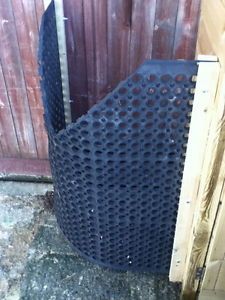The Horse magazine has an article this month on slow feeder safety.
Slow Feeders
I had to move my 26 y.o. gelding to a new barn last November because of significant problems with care after 19-1/2 years there. Very complicated situation. He wasn’t getting enough hay, among other things, and “my friend” the BO said she had been telling me for 2 years he wasn’t getting enough to eat. It was a boarding facility so I paid her money every month. The new BO and vet said it was the right move in the nick of time. Much longer at the old barn and I would have lost him.
I knew he was not doing well but the magnitude of the decline was much worse than I realized.
That’s not uncommon because you don’t notice subtle daily changes that accumulate when you are with them everyday. Our farrier of 20 years had the same reaction. Fortunately our retired vet gave me the name of the perfect facility owned by the perfect barn owner. They didn’t advertise. We arrived on 11/23/20 and he hasn’t run out of hay yet. When I said something on day one BO she said she was keeping track. There is a mountain in the corner of the stall. Bedding is swept back into one-fourth of the stall floor. He has another mountain outside under the overhang. He spends almost all of his time outside, having been on pasture board for 19-1/2 years. He hates stalls but is fine with a window in the grill so they can stick their heads out. A back door, always open, leads to individual runs. His is oversize.
All that hay is on the floor. If the stalls are cleaned consistently everyday his hay stays clean. They have to replace the fat around the internal organs first. It was about 2-1/2 weeks when the changes started showing on the body. No one taped him when we arrived, but he’s 16hh and looks like he has gained back at least 150 pounds. He holds his weight, won’t pork up. He is very happy now. I have my old horse back, thanks to the new BO’s care and attention.





